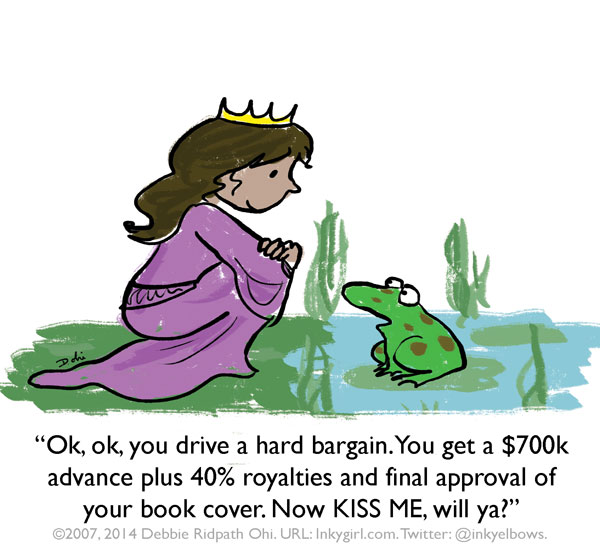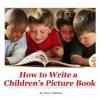
It is only March, but 2012 has already seen a series of contract disputes over digital media and technology hit the headlines.

First, rock star Peter Frampton announced he had filed a lawsuit against his record label for half a million pounds worth of unpaid music royalties and other damages. Frampton claimed he was contracted with A&M Records to receive a 50% royalty for the use of “licensed” music but had not received payment on any digital sales.
Then there was news that book publisher HarperCollins had filed a lawsuit against digital publisher Open Road for copyright infringement in relation to e-versions of the children’s book, “Julie of the Wolves”. HarperCollins claims its author contract gave it the exclusive ability to publish the work in any format but Open Road claims to have been granted the e-book rights.
And even ‘new media’ companies have their problems too. PhoneDog.com, an interactive mobile news and review website, was reported to have sued a former employee for £217,000 after he converted a Twitter account, which it was claimed was originally set up on behalf of the employer, for his own use after leaving the company.
Each of the cases involve very different parties with very different facts and very different contracts.
The first is just one of many cases over how revenue in sales of digital music should be split between artists and labels, often with a focus on how physical distribution terms can apply to digital delivery. The second case raises, once again, the crucial question over how far fundamental expectations within a contract about how a work can be exploited can change as technology develops. The final dispute highlights the need for all businesses to keep employment contract and policies up to date to reflect the way in which social media and other technology is adopted in the workplace.
It remains to be seen how successful any of the claims will be as the full circumstances of these cases emerge over time or as the parties reach settlements.
What is clear, however, is that keeping contractual arrangements up-to-date with an ever evolving media and technology landscape continues to be a challenge. It is also a form of challenge that existed well before digital. Legal text books recount the disputes that arose as theatre plays were first filmed for cinema – or when cinema films were first shown on television and released on video.
The pace of change is of course faster now and the inherent nature of digital technology allows greater opportunities for re-use. Accordingly, it is commonly suggested that the best solution is to work with technology-neutral contracts that reflect a ‘converged’ digital media. Yet in practice there is often still a need to main sector specifics and capture particular technical details.
In fact, dealing with digital successfully in a contract is often a balancing act between maintaining familiar structures and form alongside sufficient further foresight and flexibility. Future developments may not always be predictable but contracts can still try to provide for that uncertainty.
Meanwhile, it’s a pretty s
A friend has the enviable position of finding himself receiving an offer of representation for his first adult novel. It’s an amazing story: first novel, first agent who saw it is totally enthusiastic. Thrilling!
But on the heels of the excitement comes the realization that possible publication brings with it a new set of problems. Right now, you may be thinking that if you get an offer or publication, heaven has come down to earth. And you’re right!
But it’s also true that as acceptance of your recognition for your hard work moves to the next phase–publication–there are new questions.
Money. Yes, there’s the money question. Children’s book advances are more modest than those for adults; but both can bring in a chunk of change. How does this affect your financial status? For my friend, he has health issues and has government health insurance which may be in jeopardy. Of course, if the chunk of change is substantial enough, it’s no problem. But if it’s just barely enough, he’ll lose his health benefits only to need them back next year. Writing can be feast or famine, lean years alternating with fat years.
Public speaking. My friend also does NOT want to speak in public. That may change once the process rolls around, but his initial reaction is a resounding, “No!” It’s really OK. He just needs to write a great story; let the publisher sell it to the public. I know: in today’s digital world, many authors do a lot of promotion. But it’s not really necessary.
The Next Book. Of course, acceptance of one book brings the hope of a career! You hope for a string of novels (or other genre books) that come out at regular intervals and creates a strong audience for your work. That means in the excitement of getting an agent, submissions to editors and acceptance–you must write the next one. And that “sophomore” offering must be excellent, meeting the promise of the first one. In fact, the pressure is really on to exceed that first one.
Amy Tan has an instructive essay, “angst and the second book,” in her book of essays, The Opposite of Fate: Memories of a Writing Life. She says, “I am glad that I shall never again have to write a Second Book.”
It was a real struggle to meet the “promise of the first novel.” One author told her, “The Second Book is doomed no matter what you do. Just get it over with, let the critics bury it, then move on to your third book and don’t look back.”
Instead, Tan struggled. She wrote 1000 pages on various topics. Finally, she shut out the world and wrote 30 pages and found a character she liked. She took the character with her to a different story and rewrote it six times to find a question in the character’s heart. Finally, she found a reason to tell that story: it was a gift to someone. That book became The Kitchen God’s Wife. Later, at a luncheoen, someone asked, “How does it feel to have written your best book second?”
Today is the first day to enter St. Martin’s Press NO FEE Short-Story Contest. This competition gives the winner, a publication contract. The editors at St. Msrtin’s Presss we read all manuscripts and narrow it down to 10 finalists. The top ten will be sent to Jeffrey Archer to choose the winner, which will be announced on November 1, 2010.
Submission Deadline: 11:50 ET October 1st, 2010.

http://us.macmillan.com/smp/promo/jeffreyarcherpresents This looks like it would be worth a try if you have somehing that would fit with their 5000 word limit.
Good Luck,
Kathy
Is rejection your goal? No, of course not. You and I both want to succeed, to have a manuscript accepted and to sell thousands of books.
When you apply for jobs, though, especially in today’s economy, you may need to send out 20, 30, 50 resumes before you find the right job.

It’s the same for submissions. You must have the right manuscript with the right editor at the right time. So many things could go wrong: you may have the right editor and right time, but you haven’t finished the right manuscript or you just sold it elsewhere.
You may have the right manuscript and the right editor, but–maybe the editor is moving to a different house next month, or maybe s/he just bought a similar project. That means yours showed up at the wrong time.
The variations on the possible scenarios are endless, of course, but the bottom line is that a little luck is involved. And the way to increase your odds is to send out targeted, appropriate submissions, enough to collect a few rejection slips.
For some writers, it is a good goal to get 20 rejections before the end of this year. Yes, 20. Or more.
It means you are submitting, looking for the right combination of circumstances to make that sale. You want your book to be published well, not just published. You want excitement, enthusiasm, joy. And the best way to find that may be by sending it to 19 places that reject it, and a 20th who accepts it.
Go on. Get rejected a lot this year!
 Visit Our EBOOK STORE! |  How to Write a Picture Book. Ebook, immediate download. $10. How to Write a Picture Book. Ebook, immediate download. $10. |
 Before the holiday break, I published two articles examining the warning signs of a problem client and what to do about it. Today I’d like to go into a little more detail about your best chance at protecting yourself, your Illustration work, and your freelance business: your contract.
Before the holiday break, I published two articles examining the warning signs of a problem client and what to do about it. Today I’d like to go into a little more detail about your best chance at protecting yourself, your Illustration work, and your freelance business: your contract.
If you’re not already, you should start taking your contract very seriously, because it’s your first line of defense if things go sour. A bad situation is made immeasurably worse when there is no contract to turn to when it comes to settling differences with a troublesome client. Tomorrow I’ll be posting some sample contracts for those who are interested, but I thought I’d outline some essential features of a solid contract.
Here are some things that you should consider including in your contract:
Project Details
Don’t skimp on the details when getting things in writing, because everything that happens from start to finish should be based on what is stated in the contract.
You should include such things as the number, size, and medium of the Illustrations, the project’s name, and the intended use of the artwork. You should also clearly define the milestones/deadlines of each stage of the project and how many revisions are available to the client.
By outlining these details, you will be able to justify added fees when the client requests something above and beyond the original agreement.
Payment
In addition to your overall fee, you should clearly outline the process of payment. For example, you may require half of the total price up front and a fraction of the remainder upon the delivery of each stage of the project. It can also be helpful to state that your artwork cannot be used by the client until the balance is paid in full. If these details aren’t in writing, you won’t be able to enforce them, and you might as well be doing spec work.
Kill Fee
A cancellation or “kill” fee should be determined so that you are guaranteed payment for the amount of work that you complete. If you finish half of the project before the client decides to call it quits, you should be paid at least half of the total price, but you’d better put this in the contract to avoid a fight.
Rights Transferred
Are you selling the rights to use your work on a single print run of a T-shirt, or does the client own the artwork outright? Be sure to make this clear in the contract, especially if you intend to use the Illustration for your own purposes in the future.
Credits and Copies
You should also agree upon whether you’ll receive written credit for your work, and if you’ll receive book copies, tear sheets, or other products created with your artwork as part of your payment.
Contact Info
This may sound like a no-brainer, but whether you’re working with an individual or a company, be sure to get the contact info and signature of at least one person who will be responsible for payment and any other obligations.
Protect Yourself
At our spring conference, Jen Rofe, literary agent at Andrea Brown Literary spoke about sending out manuscripts.
The one thing that surprised me was her attitude toward submission and revision. Rofe said she usually sends out a mss to about five editors. Then, depending on the feedback, she’ll often ask the writer to revise. She considers those “test submissions.”
Re-reading some of Writing the Breakout Novel Workbook by Donald Maass, I noticed the same thing. He said that Parnall Hall had to revise a mystery:
A test round of submissions suggested that the points of view in A Clue for the Puzzle Lady were improperly weighted. Hall revised, and the second round hit the jackpot. p. 47
Interesting. If literary agents regularly use this approach of test submissions then revision, it’s something to think about.
Next time you send out your children’s picture book manuscript or your novel manuscript, target five publishers. If you get feedback, especially if it’s consistent in what it says, then revise before you send to five other editors.
What if you don’t get personal letters from editors? I recently sent a picture book manuscript to about five different people and, without consultation with each other, four of the five mentioned a few items that needed work. Now, personally, I loved the fifth person’s comments! If she was an acquiring editor and bought the mss as is, no problem. But she’s not.
So, I have an overwhelmingly consistent opinion that something needs work.
Usually, I send to a critique group and everyone there sees the mss and it’s a group discussion. That always feels like a single opinion to me; here, I sent it privately and it’s five opinions. If those five had been in a group, the discussion may have progressed the same, but I would not be as likely to pay attention.
Will I always ask for separate critiques now? No. The group discussions are valuable. But I’m definitely adding this variation to my arsenal of revision strategies.
And yes, I’m working on revising the picture book manuscript, trying to do at least some of what these individuals asked for, while secretly hoping to find an editor who agreed with the other person!
Post from: Revision Notes Revise Your Novel! Copyright 2009. Darcy Pattison. All Rights Reserved.
Related posts:
“If I tell you how I feel,
Will you keep bringing out the best in me?
You give me, you give me the sweetest taboo.”
Here is a sample of potentially useful resources:
o Fair-Use: Overview and Meaning for Higher Education (
o Copyright and Fair Use (Stanford)
o Highlights of the Fair Use Guidelines for Educational Multimedia (
o AALL Guidelines on the Fair Use of Copyrighted Works by Law Libraries
Nice to see Fair Use Day earn a mention on several high-profile blogs including:
o boingboing
o ars technica
It should be noted that this general concept of educational and similar uses exceptions to copyright is also present in the law of other nations; for example, in Commonwealth nations there is a kindred concept called “Fair Dealing” (Wikipedia entry).
So, dear readers, know the law, and help your users make full use of the privileges it accords. And celebrate Fair Use Day every day!
Nice!